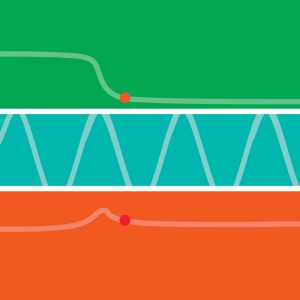 RLC series circuit
RLC series circuit
An RLC series circuit is powered by a sinusoidal voltage source of variable frequency vE(t) = VE.cos(2πft). The current i(t)is the same throughout the circuit. It is, like the entry voltage, sinusoidal but its amplitude and phase depend on the frequency: i(t) = I.cos(2πft + φ)
The voltage vR(t) observed on the oscilloscope is a reflection of the current (vR(t) = Ri(t)). The amplitude reaches a maximum for a certain frequency, called the resonance frequency f0. It depends only on L and C.
